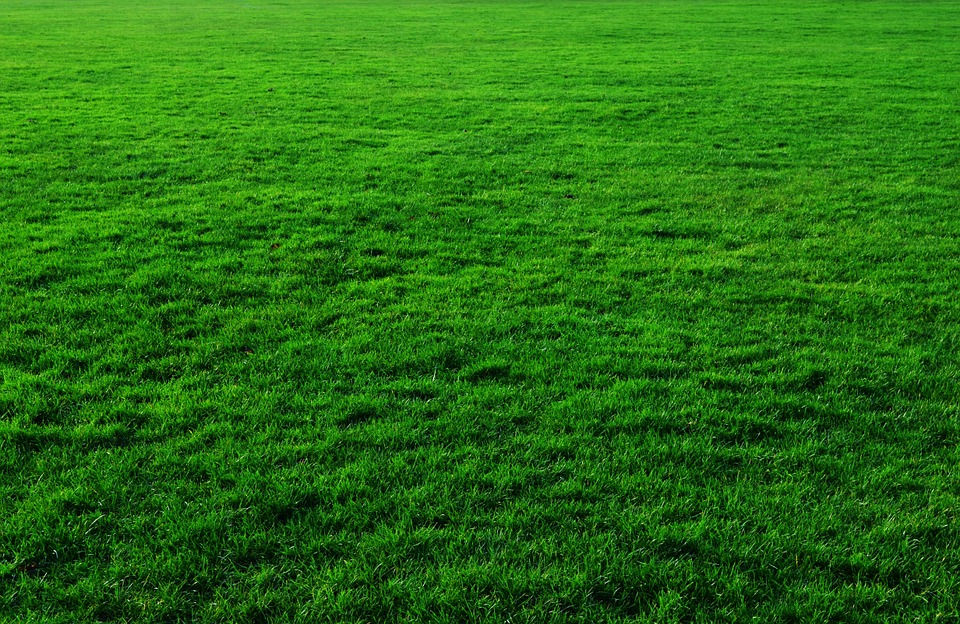Less Lawn and More Habitat
- Julie Ford
- Jan 22, 2019
- 7 min read
Finding a Balance Between Biodiversity and Bureaucracy for Homeowners and Businesses

For many homeowners and businesses, perfectly mowed lush lawns are a symbol of aesthetic perfection. For others, lawns are a waste of time, money, and are as beneficial as a parking lot to pollinators and other wildlife. As researchers study the costly impact lawns have on the environment and their caretakers, homeowners who decide to reduce or eliminate their lawns; especially front lawns, face ridicule, fines, and jail time. The polarizing issue can find middle ground, and it begins with education.
Let’s briefly look at how education changed American smoking habits. In 1965, 42 percent of adults were smokers and by 2011, less than 20 percent of adults smoked. The public’s view of smoking moved from emulation in the twenties through fifties influenced by movies, ads, and fashion, to banning the toxic habit in almost all public places within 100 years of its popularity. Baby boomers remember what it was like to sit next to someone smoking on an airplane, while millennials can hardly fathom a smoking seatmate – evidence of societal change through persistent public awareness and education.
Are lawns and all that goes into maintaining them as much of a health crisis as smoking? Since the volatile organic compounds in fuel, fertilizers, pesticides, fungicides, herbicides, and insecticides have proven toxic effects on the human body similar to the chemical-laden tobacco’s toll on humans, it’s reasonable to believe the answer may be yes.
"lawns are a waste of time, money, and are as beneficial as a parking lot to pollinators and other wildlife."
Lawn History
Moving the needle from a lawn-obsessed nation, to a less-lawn nation begins with an understanding of how lawns became an icon of American homeownership. Low-growing grasses allowed our ancient ancestors to both stalk prey and watch for approaching threats. Castles in the Middle Ages were surrounded by low grasses for the same reason – for watchmen to have the best possible advantage to maintain security. Scythes and grazing animals kept the grasses low and by the 12th and 13th centuries, historians believe lawn bowling and a version of golf to be the first games played on trimmed turf.
Over the centuries, the wealthy surrounded their estates with lawns while the villagers surrounded their homes with herbs, vegetables, and fruits, and any grassy pieces of land were grazing areas for cows and sheep. Lawn-loving immigrants to North America brought the culture and seeds with them and by 1890, a mechanical mowing device made it possible for more than the elite to have a lawn. Following World War II, the first tract housing on an abandoned 6,000 acre potato field on Long Island gave returning veterans and their families an affordable housing alternative to apartments. Each identical home built by Levitt & Sons included appliances, a white picket fence, and a green lawn. Designed for the masses, cheap to build, and appealing to the gainfully employed in the 1950s, tract housing with its green lawns underpinned the middle-class standard of vying for the best lawn in the neighborhood.
Statistics
Since the 1950s, striving for the perfect lawn has become a societal norm. Lawncare in the US is a $77 billion industry with households spending nearly $15.9 billion on lawn and gardening services, and $6.8 billion on lawn and outdoor equipment in 2015. In 2005, NASA satellite imaging suggests there are an estimated 40 million acres of lawn in the US. Additional facts include:
An estimated 136 million pieces of gas-powered lawn and garden equipment are used in the US with mowers, trimmers, and blowers accounting for 90 percent
Gas-powered lawn and garden equipment produce 6.3 million tons of toxic and carcinogenic emissions each year
Emissions from gas-powered equipment are known causes of stroke, cancer, lung disease, and heart disease
Homeowners spend an average of 66 hours a year on lawn and garden care
Between 2007 and 2009, there were 90 lawn mower-related deaths reported and between 2010 and 2012, hospitals reported 34,000 injuries caused by riding lawn mowers
One in five lawn mower deaths involves a child, and for children under age 10, lawn mowers are the main reason for the loss of a major limb
An estimated 17 million gallons of fuel used in lawn mowers is spilled each year
Watering the lawn for 20 minutes every day for one week is equivalent to one year of showers for an average family
Nearly half of the water used outdoors evaporates, is carried off in the wind, or runs off due to inefficient irrigation systems wasting thousands of gallons of water each year
Of the 29 billion gallons of water used daily in the US, 30 to 60 percent is used outdoors
Pollinator Decline
While lawns provide soil erosion protection, absorb noise, produce oxygen, and create spaces for outdoor activities, they produce no food for bees, butterflies, and other pollinating insects. Researchers also contribute pollinator decline to urban development, pesticide exposure, poor nutrition from the lack of food, and single crop farming.
Both native pollinators and honey bees are affected and the severe declines documented by US beekeepers since 2006 caught the attention of The White House in 2014. The Pollinator Health Task Force was formed and National Pollinator Health Strategy goals were established:
Restore honey bee colony health to sustainable levels by 2025.
Increase Eastern monarch butterfly populations to 225 million butterflies by year 2020.
Restore or enhance seven million acres of land for pollinators over the next five years.
Breaking the Law
If the federal government is taking serious action to protect pollinators, it’s reasonable to believe individuals, families, organizations, municipalities, and businesses can do the same. But there’s a caveat – not all municipalities are on board and the publicized cases of gardeners and concerned citizens turning their yards into pollinator paradise are many. Here are a few examples:
An Orange City, CA couple reduced their water usage from 299,221 gallons in 2007 to 58,348 gallons in 2009. They removed the front yard grass, initially left the dirt in the drought-stricken area, and were sued by the city for not complying with a 40 percent live ground cover rule.
In 2011, an Oak Park, MI resident faced 93 days in jail for planting raised garden beds in her front yard after sewer repairs tore up the area.
In 2012, Orlando, FL officials threatened to fine a couple $500 per day for not removing an established front yard garden and replacing it with “approved” ground cover.
In 2012, Ferguson, MO officials ordered a resident to remove his 55 varieties of edible plants including heirloom tomatoes, peppers, and beans due to front yard garden violations of city ordinances.
In 2015, an Alexandria, OH couple was ordered to mow their overgrown yard or be fined $1000. Prior to the fine and eventual mowing of the lawn, three months of not mowing created an ecosystem of native flowering plants that attracted a variety of pollinators, insects, and birds.
In 2017, a Miami Shores, FL couple was forced to dig up their front yard vegetable garden that they had maintained for 17 years after an ordinance to ban growing vegetables in the front yard was more clearly defined in 2013.
Seeking Middle Ground
Regulating environmentally sound activities in the name of aesthetics is a reality and the devil is in the details of city ordinances. Gardens, noxious weeds, and grass height requirements are typically outlined in the ordinances of a municipality and residents with “do first, ask questions later” attitude are asking for a knock on the door by the local enforcer of civil infractions. Below are suggestions for seeking hassle-free homegrown biodiversity:
Know the zone you are located in and find out what the ordinances are for property owners.
Research the benefits of an environmentally friendly yard and be ready to defend your reasons to city officials. Educate yourself; then educate your local government.
Seek local, like-minded organizations and cooperative extension offices to find out if they have helped homeowners where you live with less lawn endeavors. Knowing what someone nearby has experienced with the same officials you are about to meet can offer valuable information. If ordinances are outdated, and changes need to happen, ask for help.
Research how other towns in your state and across the US have changed laws to allow a front yard garden, low or no-mow area, or significant change to landscaping to create a biodiverse yard. Involve the youth of 4-H or scouting organizations to educate local government officials on the decline of pollinators and the ways to bolster populations.
With a partner or friend, schedule a meeting with the city official who has the most power over enforcing the ordinances that pertain to your project. Share what you would like to do and discuss the corresponding ordinances. Obtain approvals in writing. If a stalemate occurs, ask what the next steps are for changing an ordinance and keep the conversation civil.
Decision time – figure out whether it’s worth the effort (stress, time, money for legal fees, etc.) to change the local ordinance or to work within the ordinance. For example, if the front yard grass height ordinance states the grass can grow no taller than 8 inches, does that apply to only grass or can the lawn consist of low-growing native plants that reach 8 inches or shorter?
The middle ground begins with knowing the ordinances that apply to the property of your home or business. While laws are created to maintain order, health, and safety, over time they can become outdated and no longer applicable. For steadfast ordinances, there are still ways to improve pollinator health such as the EPA’s Water-Sense® program, white clover lawns, reducing the lawn area and creating beds of native plants, and planting trees such as American basswood, linden, dogwood, and catalpa.
Every effort to provide food and shelter for pollinators is worthwhile. If the slow wheels of the federal government can move in the right direction to research pollinator decline, educate the public on the need for its reversal, and implement change, so can the rest of us. Consider making some new areas in your yard where pollinators can find respite, food, water and safety. If we all do just a little bit, it can add up to a big impact!
As always, come to one of our classes, call us or e-mail us with questions. Great Lakes Bee Supply is here to help you benefit pollinators and other wildlife at your business, home or in your community.
amputee-coaltion.org
bls.gov
epa.gov
farmland.org
lawnstarter.com
ncbi.nlm.nih.gov
nifa.usda.gov/cooperative-extension-system
pollinators.msu.edu
saferproducts.gov
statista.com
thelawninstitute.org














































Comments